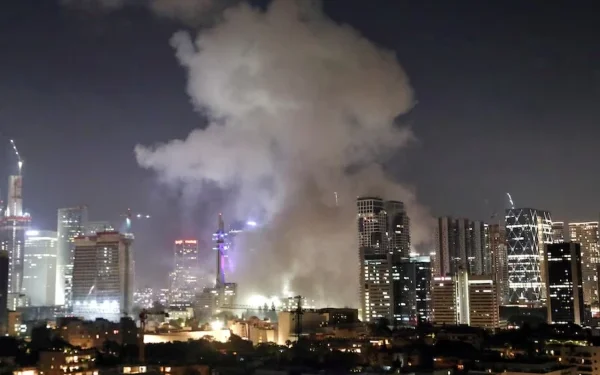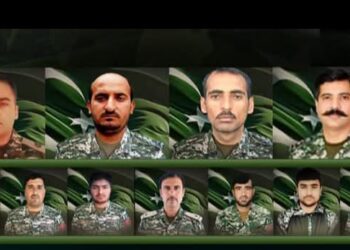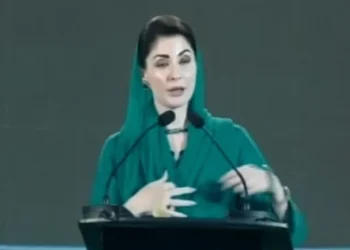Escalating Tensions in the Middle East Spark Alarm
The already tense situation in the Middle East took a dangerous turn early Saturday when Iran launched its fourth major missile attack on Israel, striking targets in Tel Aviv, Jerusalem, and other locations. The escalation has left 63 people injured, caused significant infrastructure damage, and raised fears of a broader regional conflict.
The Iranian assault marks the continuation of what Tehran has named “Operation Promised Sadiq III,” a retaliatory military campaign aimed at pressuring Israel in response to its policies and recent actions in the region. With buildings reduced to rubble and air sirens blaring throughout Israeli cities, the fourth wave of missile attacks has intensified calls for international intervention.
Details of the Fourth Missile Attack
The latest missile barrage was launched by Iran in the early hours of Saturday morning. According to Israeli military sources and media reports, several of the missiles targeted central locations in Tel Aviv, including a building associated with the Israeli Ministry of Defense, while others landed near Gush Dan, a densely populated metropolitan area surrounding Tel Aviv.
Residents of Tel Aviv and Jerusalem were jolted awake by multiple loud explosions, as Israeli air defense systems attempted to intercept the incoming missiles. Despite the effectiveness of the Iron Dome and David’s Sling defense systems, several missiles managed to penetrate the shield, resulting in direct hits on residential and government structures.
Casualties and Damage
Preliminary reports confirm that at least 63 civilians have been injured, some of them critically, due to falling debris, fires, and building collapses. Several residential and commercial buildings were severely damaged or destroyed, sparking large-scale rescue operations by emergency response teams.
The Israeli Fire and Rescue Services reported multiple blazes across Tel Aviv and Gush Dan, while medical personnel and hospitals remain on high alert. Authorities have set up emergency shelters and issued evacuation notices in high-risk zones.
Iran’s Justification: Operation Promised Sadiq III
Iranian state media described the missile strikes as part of “Operation Promised Sadiq III,” which it claims is a legitimate retaliatory response to what it calls Israeli provocations and aggression.
According to Iranian military officials, the operation is designed to impose “strategic consequences” on Israel for its involvement in regional conflicts, particularly its actions in Syria, Lebanon, and the occupied Palestinian territories. Iran claims the operation is measured, targeted, and intended to “teach a lesson” to Israel without directly aiming for large-scale civilian casualties.
In the earlier phases of the campaign, Iran had already launched an estimated 150 to 200 missiles toward Israeli territory in three successive waves:
- The first wave involved about 100 missiles.
- The second wave fired around 50 missiles.
- The third wave also consisted of approximately 50 missiles.
With the fourth wave now confirmed, analysts warn that this may be just the beginning of a prolonged conflict.
Israel’s Response and Civilian Protection Measures
The Israel Defense Forces (IDF) confirmed the attack and stated that interceptor missiles successfully neutralized many of the threats, though they acknowledged that several missiles struck sensitive targets.
In response to the evolving threat, the IDF has:
- Activated air raid sirens in central and southern Israel.
- Ordered residents to move to underground shelters and safe zones.
- Increased aerial patrols and surveillance along Israel’s northern and eastern borders.
- Held emergency cabinet-level defense meetings to decide the next course of action.
The Israeli government has warned that it will not tolerate continued missile attacks and vowed to respond “at the time and place of its choosing.” Military reinforcements have been moved closer to border regions and critical infrastructure facilities.
International Reactions and Growing Concern
The global community has begun reacting to the latest wave of violence. Initial responses have expressed alarm at the potential for wider escalation, particularly involving other actors like Hezbollah in Lebanon, militias in Syria, or the United States, which maintains bases across the region.
United Nations Appeal for Restraint
The United Nations Secretary-General issued a statement urging both sides to exercise maximum restraint, calling for de-escalation and dialogue. He also emphasized the need for all parties to comply with international humanitarian law and avoid targeting civilians or civilian infrastructure.
United States Position
The U.S. Department of State condemned the Iranian missile strikes and reaffirmed its support for Israel’s right to defend itself. However, officials also privately urged both nations to avoid actions that could lead to a full-scale regional war.
European Union’s Reaction
The European Union expressed “deep concern” over the intensifying hostilities and warned of widespread instability if the conflict continues. EU diplomats are reportedly working behind the scenes to mediate and open backchannels for negotiations.
Potential for Regional War
Military analysts warn that the frequency and scale of Iran’s missile strikes suggest a calculated escalation that may lead to a broader Middle Eastern conflict. The region remains fraught with tension, as multiple players—including Iranian-backed militias, Israeli allies, and regional rivalries—could be drawn into a larger confrontation.
Possible Scenarios Include:
- Increased Hezbollah rocket attacks from southern Lebanon.
- Retaliatory airstrikes by Israel on Iranian targets in Syria or Iraq.
- Wider conflict involving U.S. assets or Gulf nations.
- Escalation in the Red Sea and Persian Gulf, affecting global oil supply chains.
Historical Context: A Long-Standing Rivalry
The hostility between Iran and Israel dates back decades. Iran’s Islamic regime does not recognize the State of Israel and has openly supported groups like Hamas, Hezbollah, and Islamic Jihad, whom Israel deems as terrorist organizations.
Israel, for its part, has conducted numerous airstrikes in Syria and Iraq targeting Iranian assets and has accused Tehran of pursuing nuclear weapons, a charge Iran denies.
The latest attacks are not isolated incidents but are the culmination of years of shadow warfare, cyber operations, and indirect confrontations that have now moved into direct state-to-state military strikes.
Public Sentiment and Media Coverage
In both Iran and Israel, nationalistic sentiment has surged. Iranian media hailed the missile attacks as a “legitimate defense of sovereignty”, while Israeli outlets emphasized the suffering of innocent civilians and the need for a strong national response.
On social media, hashtags such as #TelAvivUnderAttack, #IranMissileStrike, and #MiddleEastOnEdge have been trending globally, reflecting the widespread concern and engagement from people across different countries.
Conclusion: A Critical Juncture for the Region
The fourth missile attack by Iran on Israel represents a dangerous escalation in one of the world’s most volatile regions. With dozens injured, buildings reduced to rubble, and political rhetoric intensifying, the situation is now at a critical turning point.
Unless immediate diplomatic efforts are launched and both nations choose dialogue over force, the Middle East may face a new era of open warfare with implications far beyond the region. The international community, led by the UN, EU, and major powers, must act swiftly to prevent a conflict that could spiral out of control.

























